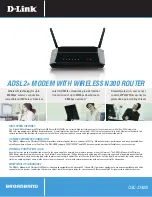AN93
Rev. 1.4
37
The commands end with a <CR>, which, in combination with the final<CR>, provides the <CR><CR> delimiter.
Boot commands must be the first entry in the EEPROM and are used to set the modem up with custom defaults,
such as settings for specific countries, auto answer, or other special settings upon power up or after a hardware or
software reset.
This saves the host processor from reloading special configuration strings at power up or after a reset, and allows
the modem to be customized by programming the EEPROM or by substituting preprogrammed EEPROMs. If the
BOOT command is the final entry in the EEPROM, it must end with an additional <CR> to provide the
<CR><CR><CR> delimiter indicating the end of the EEPROM.
2.7.5. AT Command Macros (Customized AT Commands)
Macros allow the creation of single custom AT commands that execute combinations of default AT commands
including special register configurations. AT command macros have the following format:
<command name><CR>
<commands><CR>
<commands><CR>
<CR>
Each AT Command Macro ends with a <CR><CR>. The final entry in the EEPROM ends with an additional <CR>
to provide the <CR><CR><CR> delimiter indicating the end of the EEPROM. AT command macros can have a
name consisting of any string of characters but must be the only command on a line.
2.7.6. Firmware Upgrades
Firmware upgrades (“patches”) are typically executed upon boot-up and stored between the heading, BOOT, and
the first <CR><CR> delimiter. A firmware upgrade has the format: BOOT<firmware upgrade><CR>. The firmware
upgrade ends with a <CR>, which, in combination with the final<CR>, provides the <CR><CR> delimiter, which
marks the end of the EEPROM contents. A firmware upgrade can also be stored as an AT command macro in a
system where using the firmware upgrade is optional. The following are examples of boot commands, AT
command macros, and automatically-loaded firmware upgrades.
2.7.6.1. Boot Command Example
On power-up or reset, it is desired to set the UART rate to 115.2 kbps and limit the ISOmodem to V.34 and lower
operation.
The AT commands required to do this manually are:
AT\T12<CR>
AT&H2<CR>
To implement this as a boot command, the commands are:
BOOT<CR>
AT\T12<CR>
AT&H2<CR>
<CR>
This must be written to the EEPROM as ASCII hexadecimal in eight address blocks. The actual AT commands to
store this boot command in the EEPROM starting at address 0 are:
AT:M0000,42,4F,4F,54,0D,41,54,5C
AT:M0008,54,31,32,0D,41,54,26,48
AT:M0010,32,0D,0D,00,00,00
The value 0x41 corresponds to the display character A, 0x54 to T, 0x42 to B, 0x4F to O etc., and the value 0x0D,
for carriage return corresponds to the decimal value, 13, stored in S-register 3 (S3). Table 39 shows the
relationship between the decimal values, hexadecimal values, and display characters.
Содержание Si2404
Страница 2: ...AN93 2 Rev 1 4 ...
Страница 27: ...AN93 Rev 1 4 27 Figure 7 Parallel Interface Read Timing Figure 8 Parallel Interface Write Timing ...
Страница 200: ...AN93 200 Rev 1 4 Figure 31 TAM Handset and Speakerphone Voice Paths ...
Страница 201: ...AN93 Rev 1 4 201 Figure 32 Si3000 Codec Gain and Signal Selection Options ...
Страница 290: ...AN93 290 Rev 1 4 Figure 57 256 Band Spectral Display Figure 58 2048 Band Spectral Display ...
Страница 305: ...AN93 Rev 1 4 305 Figure 76 Parallel or SPI Port Interrupt Service Flowchart ...


















